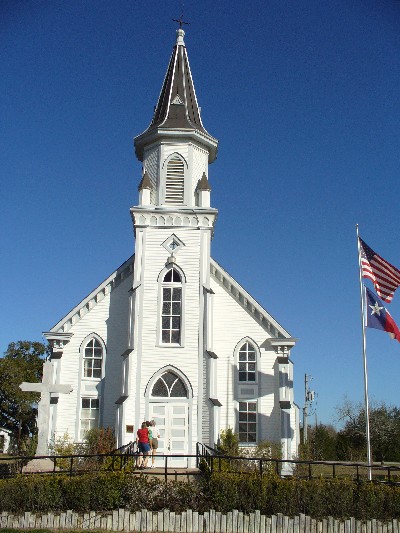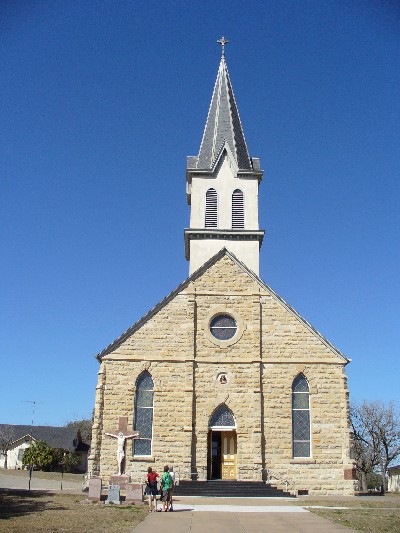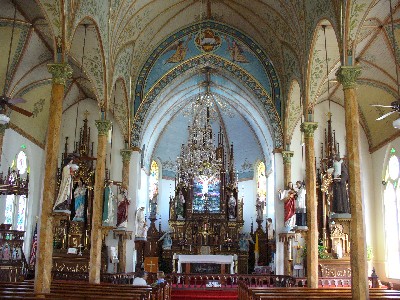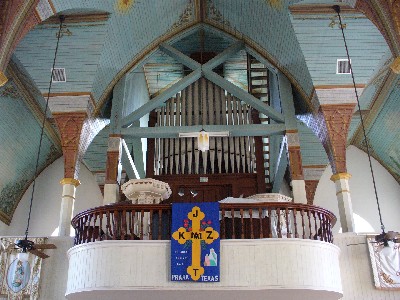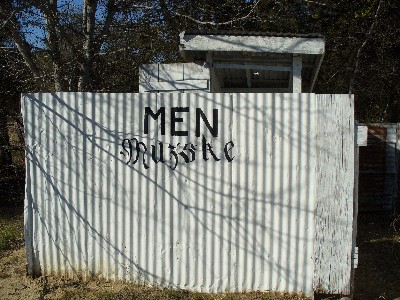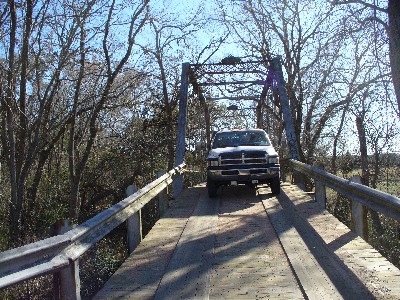The sign said “Queen of the Painted Churches.” It pointed back the way we had just came from St. Marys Church in High Hill, Texas. We were touring five of the “Painted Churches” of Fayette County Texas, a specially promoted tour by the Schulenberg Chamber of Commerce.
What we were discovering was the history of the area. We were driving on roads with names like Mazurek, Ohnheiser, Mansik, Lidiak, Mazoch, Knape, Kallus and Guenther. These were the same names we also saw in the cemeteries at the churches we were visiting. The histories of these churches indicated that they were founded from 100 to 150 years ago by Czech and German immigrants. Early buildings were lost to hurricanes or fire, but the congregations repeatedly salvaged what they could and rebuilt again and again. We crossed trails with a tour at the 150 year old St. Mary’s in Praha Texas. The tour leader stopped to hand us some helpful literature and told us that his father had helped shape the stones that made up the walls of this church.
The roads themselves wandered around the countryside, past tidy farms and close cropped pastures. The land in this area of Texas is rolling countryside dotted with small ponds behind earthen dams. The live oak trees command the fringes and less tillable areas of the farms and some of them are huge spreading canopies with multiple trunks. The sweeping limbs frequently droop clear to the ground thirty or forty feet from the cluster of trunks. In parks it is not unusual to see these grand denizens of the forest supported by steel posts.
The churches themselves seemed outwardly to be of a common architecture. The construction varied from wood to stone to brick, but the form was a soaring bell tower with steeple above. Rectangular shape with a door in the middle of each side. Inside the arched ceiling was forty or fifty feet high and there was a balcony above the entryway which contained the pipe organ. At the opposite end, the chancel is set into the wall in a high arch. The sun was splashing through the stained glass windows in a glory of color only to be outdone by the elaborately decorated interiors of the Catholic churches. In stark contrast to these churches was the simple elegance of the interior decoration of the Lutheran church at Swiss Alp, Texas. Outwardly the building was nearly identical to all of the others.
Each community was only five or ten miles from the next, and indeed the record speaks of circuit riding preachers before communities were able to build and support their own church. We traveled almost exclusively by narrow county roads. As we approached Dubina, Texas we were privileged to cross the single lane “Piano” bridge built in 1885 by the King Iron Bridge Company of Cleveland Ohio.
Now we were riding in John and Marie’s Dodge truck for this trip of exploration. The entire circuit was just over eighty miles. There were two factors that were stacked against us for our usual bicycling excursions. The distance was a bit longer than our best 63 mile ride this year, but more importantly, Path, our gallant green dragon tandem bicycle, is feeling poorly this week. Stress fractures caused our seats to become less than securely affixed to the frame of the bicycle. I have completed the replacement parts, and as soon as I get them painted we will be back in business.
Here is a collection of photos from our tour.
